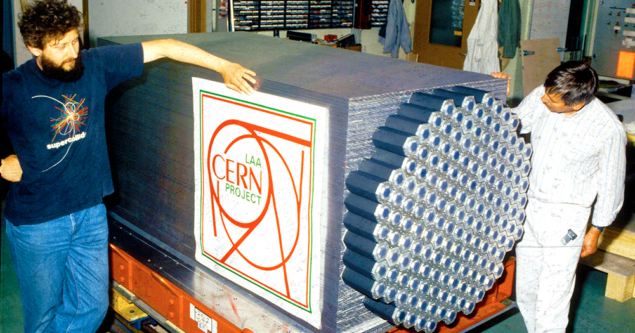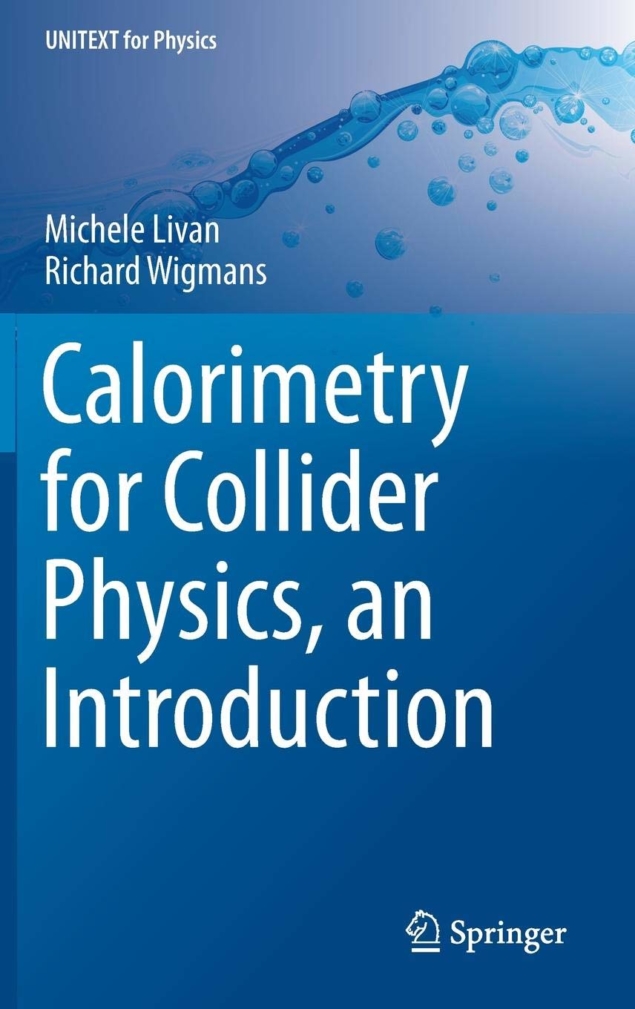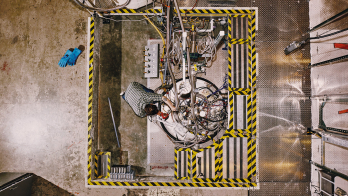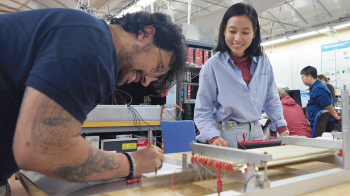Calorimetry for Collider Physics, an Introduction, by Michele Livan and Richard Wigmans, Springer

Concise and accessible, Calorimetry for Collider Physics is a reference book worthy of the name. Well known experts Michele Livan and Richard Wigmans have written an up-to-date introduction to both the fundamental physics and the technical parameters that determine the performance of calorimeters. Students and senior experts alike will be inspired to deepen their study of the characteristics of these instruments – instruments that have become crucial to most contemporary experiments in particle physics.
Following a light and attractive introductory chapter, the reader is invited to refresh his or her knowledge of the interactions of particles with matter. Key topics such as shower development, containment and profile, linearity and energy resolution are discussed for both electromagnetic and hadronic components. The authors provide illustrations with test-beam results and detailed Monte Carlo simulations. Practical and numerical examples help the reader to understand even counterintuitive effects, stimulating critical thinking in detector designers, and helping the reader develop a feeling for the importance of the various parameters that affect calorimetry.
The authors do not shy away from criticising calorimetric approaches
An important part of the book is devoted to hadron calorimetry. The authors have made a remarkably strong impact in understanding the fundamental problems with large set-ups in test beams, for example the famous lead-fibre sampling spaghetti calorimeter SPACAL. Among other issues, they correct “myths” as to which processes really cause compensation, and discuss quantities that correlate to the invisible energy fraction from hadrons involved in the shower process, for example, to measure the electromagnetic shower fraction event-by-event. The topical development of the dual-readout calorimeter concept follows logically from there – a very promising future direction for this central detector component, as the book discusses in considerable detail. This technology would avoid the question of longitudinal segmentation, which has a particular impact on linearity and calibration.

Livan and Wigmans’ book also gives a valuable historical overview of the field, and corrects several erroneous interpretations of past experimental results. The authors do not shy away from criticising calorimetric approaches in former, present and planned experiments, making the book “juicy” reading for experts. The reader will not be surprised that the authors are, for example, rather critical about highly segmented calorimeters aiming at particle flow approaches.
There is only limited discussion about other aspects of calorimetry, such as triggering, measuring jets and integrating calorimeters into an overall detector concept, which may impose many constraints on their mechanical construction. These aspects were obviously considered beyond the scope of the book, and indeed one cannot pack everything into a single compact textbook, though the authors do include a very handy appendix with tables of parameters relevant to calorimetry.
By addressing the fundamentals of calorimetry, Livan and Wigmans have provided an outstanding reference book. I recommend it highly to everybody interested in basic detector aspects of experimental physics. It is pleasant and stimulating to read, and if in addition it triggers critical thinking, so much the better!








